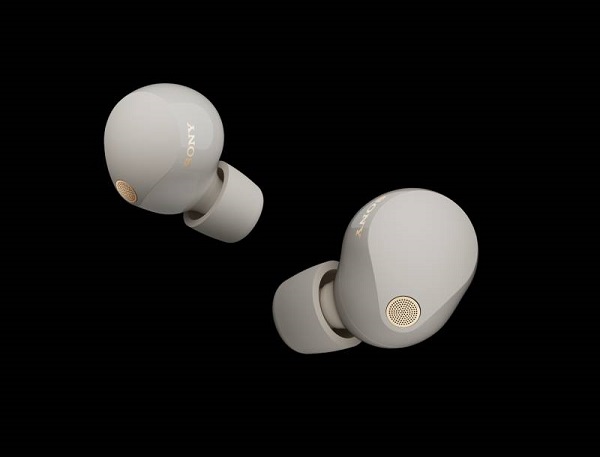
October 22, 2023: Twenty years ago, if you were seen with a Bose Quiet Comfort headphone over your ears at the airport, you were dismissed as a snooty anti-social traveller who wasn’t interested in making any conversation with anyone
During the flight of course, you could get sound sleep without being distracted by cabin noise. Over the years, aircraft have become less noisy, and that chunky piece of equipment has become smaller and lighter. But it remained an over the ear device
History of noise cancellation
After Bose kickstarted the active noise cancellation revolution, brands like Pioneer and Sony joined the bandwagon by launching products that were slightly slimmer but still fairly chunky and noticeable
Pioneer focussed more on the DJ and public performance headphones while Bose stuck to enhancing its airline frequent flier market and discerning premium users of audio equipment.
Interestingly, the first use case of noise cancellation headphones was for pilots to focus on their job of interacting with the ATC without outside noise interference. The initial variants of such headphones introduced artificial noise through sound waves that neutralizes background noise.
A small tech note: Active noise cancellation uses electronic circuits to significantly neutralise the ambient noise. Passive noise cancelling, much less effective, uses sound muffling pads in the ear piece.
A market that’s set to grow
According to a survey by Mordor Intelligence, the market for active noise cancellation devices is expected to grow from US$ 15.68 billion in 2023 to US$ 30.19 billion by 2028, at a Compounded Annual Growth Rate (CAGR) of 14% during the forecast period (2023-2028). The growing awareness towards hearing disorders, the transition to being hearable in the connected environment, the increasing number of smartphone users and tech-savvy consumers, and the adoption of new audio technology are some prominent factors expected to drive the headphones market.
Additionally, the survey also reveals that Asia-Pacific is anticipated to register the fastest growth over the forecast period, owing to some major players in the region. Their regional presence, coupled with the extensive research and development activities carried out by these players, has resulted in the region's wide-scale adoption of active noise-cancellation headphones.
And the customers in the region are playing their part too: The survey says: “Asia-Pacific players are introducing innovative features of noise-cancelling headphones to meet the dynamic consumer demands and attract a large consumer base in the region.” After China, India is the biggest market for ear wear in the region.
As technology progressed, the concept of ambient sound saw better understanding, using artificial intelligence algorithms, while the form factor of the devices began shrinking rapidly.
As recently as April this year, I shared my experience in this space of Sony’s over-the-ear WH-CH720N noise cancelling headphones. Now the same company seemingly says in words that recall a famous Hollywood comedy movie series of yesteryear: “Honey, I’ve shrunk the noise cancelling headware!”
Yes, they’ve shrunk noise cancelling technology to fit into the smallest form factor available for audio ear wear today: the earbud
Smallest noise cancellation device
The frontrunner in the recent reimagination of active noise cancellation seems to be a major player headquartered in the region, Japan-based: Sony. It is the first brand that has created a proprietary chip exclusively for noise reduction, along with a second chip for better sound quality, both embedded in the two earpieces of its latest earbud.
I have had the opportunity of trying out the newly launched WF-1000XM5 earbud that comes with an integrated V2 processor for sound quality, connectivity and optimized power consumption, while the QN2e processor is dedicated exclusively to optimizing noise cancellation on-the-go, nestled in a six-microphone setup that catches and processed higher magnitudes of ambient sound while increasing the clarity of useful sound. The resulting audio quality is superior to anything I have hitherto experienced in this class of TWS or True Wireless Stereo earbuds.
In-built tech algorithms
AI is seemingly everywhere – even in ear buds: The WF-1000XM5 leverages the power of deep neural networks to create an AI-driven noise reduction algorithm that is trained on 500 million voice samples, enabling the isolation of human voice from various forms of ambient noise.
Additionally, its wind noise reduction assures better clarity while you are on-the-move.A clever head-tracking technology automatically adjusts sound fields to compensate for your head movement.
The Sony earbuds claim to offer the smallest ever form factor for an active noise cancellation device.
It is currently available for Rs. 24,990 and is becoming noticed by audiophiles who are promised stable connectivity with wireless charging, head movement gesture controls and a good battery life.
Admittedly Sony is not the only maker now who has put active noise cancelling into ear buds: Sennheiser, Apple and Samsung,to name three, are also in the field (Apple calls them earpods)
The message is clear. Noise cancellation devices no longer need to be chunky and difficult to carry around. They fit snugly into your ear, helping you disconnect from the big, bad, noisy world out there.
Have a peaceful festive season this year!
This article has appeared in Swarajya